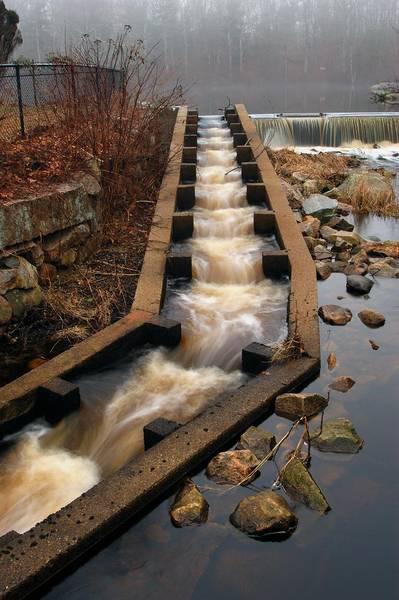

Ecoduct De Woeste Hoeve is an example of how design can harmonize human infrastructure with nature. The curved ecoduct blends into the surrounding forest, creating a natural passageway for wildlife to cross over busy roads without human interference. It’s a reminder that design isn’t just about creating for people; it’s about coexistence with the environment.
As a driver passing beneath it, you feel humbled. You’re no longer the main user, but a guest. The road, usually a symbol of human dominance over nature, feels secondary here.

Nature unfolds in multiple layers, each playing a vital role in creating a passage for wildlife. This ecoduct design doesn’t just cross the road it connects the diverse layers of the ecosystem. The ecoduct creates a transition, where the needs of the ecosystem, depending on the location, are prioritized and the wildlife moves freely, undisturbed by the roadway below.
The layers of nature at the Woeste Hoeve ecoduct.
Ground Layer: At the base of the ecoduct, mosses and fungi create a fertile ground for life. This layer, rich with microorganisms and insects providing a solid foundation for plants to grow. It’s a crucial layer that supports all life above it, forming the ecological bedrock of the ecoduct.
Field Layer: this layer consists of grasses, ferns, and small wildflowers. Here, insects and small fauna like rabbits find food and shelter. This layer is particularly important for smaller species to move across the ecoduct.
Shrub Layer: The shrub layer adds height and complexity, featuring bushes and young trees that offer food and nesting spaces for birds and other wildlife. This layer creates a natural barrier between the lower and upper layers, providing cover and protection for animals as they cross the ecoduct.
Canopy Layer (not at Woeste Hoeve): Towering above is the canopy layer, formed by the mature trees. This layer acts as a green roof, offering shade, shelter, and a habitat for birds, squirrels, and other tree-dwelling species.






They are land, water, and air connections that serve as natural wildlife corridors, and are crucial for the survival of many animal species. By intelligently linking natural and urban areas, we create a harmonious balance between humans and nature. This not only promotes biodiversity but also enhances the livability and sustainability of the environment.
RED CRAB MIGRATION
On Australia’s Christmas Island, every effort is made to give tens of millions of red crabs safe passage to the coast. With the help of crossing points, the animals are given free access to their migration route.
UPSTREAM
This fish ladder near Russells Mills Village in Dartmouth, Massachusetts, serves as a wildlife corridor for fish migrating upstream. It enables various species, including herring and salmon, to bypass barriers and reach their spawning grounds. By facilitating these migrations, the ladder helps maintain healthy fish populations and supports the overall ecosystem..

BEE HIGHWAY THROUGH OSLO
Thanks to a group of urban beekeepers, Oslo’s bees can safely navigate the city. Green roofs, parks, and strategically placed beehives provide the bees with resting spots and food sources almost anywhere in the city.

Snøhetta entices bees into Oslo with honey-coloured Vulkan Beehives (Howarth & Howarth, 2014)



(Howarth & Howarth, 2014)






The Veluwe, one of the largest nature reserves in the Netherlands, is crossed by various roads and infrastructure that disturb the natural habitats of animals. To bridge these barriersseveral ecoducts have been constructed.
Important ecoducts around the Veluwe include “Ecoduct Hoog Buurlo”, which spans the A1 and connects the northern and southern parts of the Veluwe, and “Ecoduct Woeste Hoeve”, which crosses the A50. These structures help ensure that animals can safely cross roads and maintain access to different areas of their habitat.




Lois Weinberger’s “Wild Cube” and ecoducts share the same vision: both create space for nature within human-made structures. Both concepts demonstrate the balance between humans and nature, where human creations provide room for ecological processes and promote biodiversity.







Sea Ranch prioritizes preserving the natural environment while allowing human activity. While ecoducts specifically focus on supporting ecological processes, such as the movement of flora and fauna or undisturbed plant growth, Sea Ranch aims for a broader harmony between human living and the natural landscape. All three projects share the vision of not dominating nature but becoming a part of it, demonstrating how human interventions can be thoughtfully integrated with the natural world.
Similar to ecoducts, Sea Ranch could benefit from areas designed for animals to move through, ensuring that their natural routes are not blocked by buildings. This could benefit the ecological connectivity of the region and contribute to the preservation of local species.

These projects attempt to bridge the gap between human development and ecological preservation; however, it is clear that human interventions still put pressure on nature. The focus often lies on aesthetics and functionality, overlooking the ecological needs of the environment.
A successful fusion between humans and nature requires not only respect and awareness of ecological processes but also a fundamental change in how we design. We need to recognise nature as an equal partner, not a resource, so that we can coexist without further eroding the natural world.

